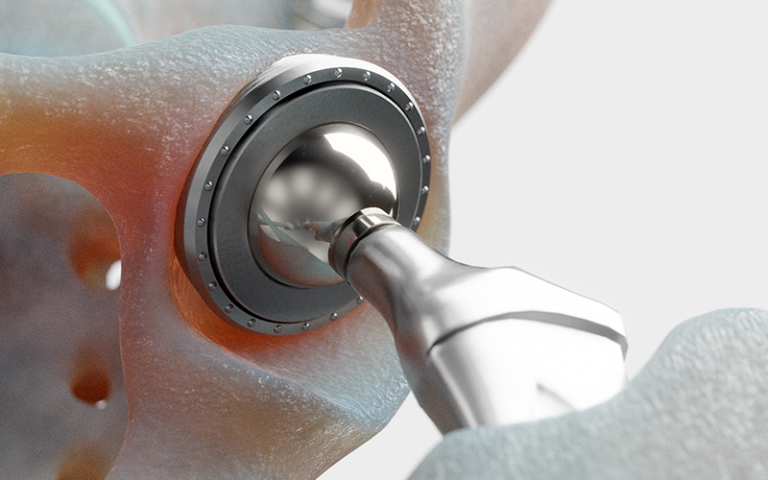Making joint implants safer by identifying causes of previous failures
Professor Alister Hart’s research has identified some causes of failed spine, hip, and knee implants. This informed surgical decision-making and halted manufacture of unsafe implants.

12 April 2022
In England and Wales, approximately 200,000 people receive hip or knee replacements each year. Most replacement joints last more than 15 years, but at least 1% fail much more quickly, costing the NHS approximately £250 million each year in additional surgery and patient management costs.
Forensic analysis of more than 10,000 failed implants
To understand the reasons for replacement joint failures, a team led by Professor Alister Hart (UCL Division of Surgery and Interventional Science) collected more than 10,000 failed spine, hip, and knee implants which had been removed from patients in 29 countries, together with associated medical scan images (e.g. x-rays) and patient-specific clinical data.
By forensically analysing the implants to understand how they had worn and corroded and then correlating the data with clinical information about the patient, the team identified the mechanisms and risk factors for failure and the clinical impact.
The analysis results and its immediate effects
They found that in 1% of cases the ‘ball’ and ‘socket’ parts of the replacement joint were not of matching size. The implants were highly worn and blood samples from these patients contained greater traces of metal than normal. The researchers found the mismatch error was happening at almost double the rate reported by the UK National Joint Registry (NJR), which records every hip and knee replacement procedure performed in the UK.
In response to this finding, the NJR team created a real-time early-warning alert system to inform surgeons when a wrongly sized implant had been inserted and enable them to correct the problem before tissue damage occurred.
The improvements in patient care and monitoring are reducing patient anxiety and saving the NHS millions of pounds each year in unnecessary surgical procedures and clinical tests.
Helping aid safety and save NHS money
It also prompted the research team to perform a large-scale data audit of failed implants and how they had been recorded in the NJR. The audit revealed that almost two-thirds of metal-on-metal hip joint failures had been improperly recorded, sparking a programme of improvements, led by the medical director at NJR. Such monitoring has already saved the NHS £1.5 million in unplanned surgery for unexplained joint failures.
Professor Hart’s research also identified unsafe generic implants that were more likely to result in them corroding and causing soft tissue and bone destruction around the implant. In addition, the team identified implants with a dual-taper design that were more likely to fail.
As a direct result, the Scientific Committee on Health and Environmental Risks of the European Commission updated their implant safety recommendations and advised against dual-taper implants and generic manufactured implants.
Professor Hart said: “Regulators are using the improved registry data to independently evaluate the performance of different implant designs and NHS directors and the Medicines and Healthcare products Regulatory Agency (MHRA) are providing updated guidance to over 56,000 patients in the UK on the safety of their implants as a direct result of our research.”
Research synopsis
Making surgical joint implants safer by identifying the cause of previous failures
Professor Hart’s research at the Royal National Orthopaedic Hospital (RNOH) NHS Trust has identified the mechanisms that cause some spine, hip, and knee implants to fail. The team’s analysis of some 10,000 failed implants and patient records has improved large-scale record keeping and patient follow-up, informed surgical decision-making and halted manufacture of unsafe implants.
Links
- Professor Alister Hart's academic profile
- UCL Department of Orthopaedics and Musculoskeletal Science
- UCL Division of Surgery and Interventional Science
- UCL Faculty of Medical Sciences
- UCL Faculty of Medical Sciences REF 2021
Image
- Image credit: iStock/Marcin Klapczynski
 Close
Close

